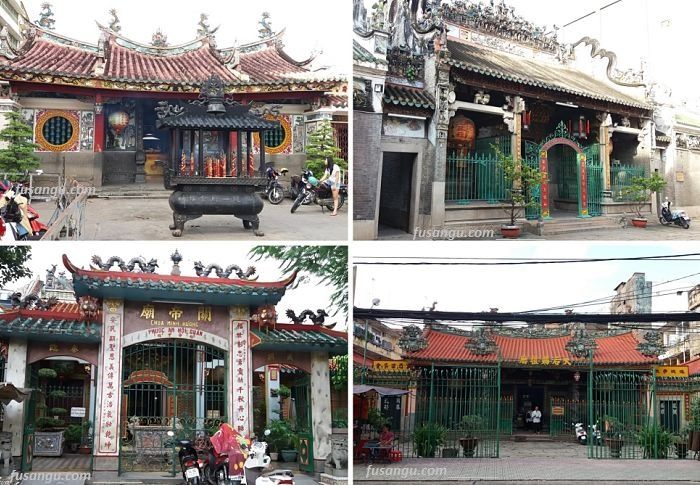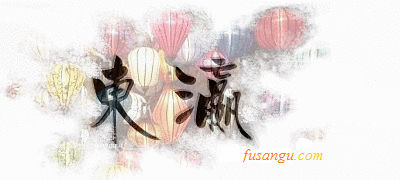
In this page we outline a 3-day visit to Ho Chi Minh City. Often neglected or visited in all hasty, the former Gia Dinh - Sai Gon is a city that deserves at least two days. Having three days allows for a varied and more enjoyable experience.
While the the urban sprawl itself is nowadays a rather ugly and gloomy jungle of concrete, the city has still many places of interest, of particular appeal to those who are interested in the recent history of Vietnam and the Indochina Wars.
Ho Chi Minh City 3-day itinerary: suggested programme
Three days allow to visit the main sightseeing spots and less known places of interest. There is plenty of choice as to side trips.
In this page we omit excursions to the Mekong Delta, which, in our opinion, should not take place as one-day side trips from Ho Chi Minh City but rather be 2-3 day itineraries with stops at either Can Tho, Sa Dec or Ben Tre.
Day 1: District 3, Ben Thanh, Ben Nghe
The first impact with the reality of modern-day Saigon is quite a shock. Noise, confusion, traffic, pollution and humid heat can be a shock.
For the first day it is better to take part in a comfortable guided tour.
War Remnants Museum
If you are not into war museums, make sure you do not miss out on this one at least. Its name, diplomatically softened over the years, is quite deceptive because while a variety of military equipment is present, it does not make for the most important exhibits on display and certainly not the reason why you should come here.
The museum offers an invaluable opportunity to get to know the horrors of the Vietnam War (the Second Indochina War) from the Vietnamese perspective.
Starting from the top floor and going all the way down you will see photos, documents, maps and a variety of informative material. Exhibits include tanks, aircraft, a guillotine and the infamous tiger cages.
The experience can be quite intense and deeply moving. Most shocking are the pictures showing the effects of the mass usage of defoliants and chemical agents on Vietnamese civilians.
The museum is located in District 3, close to the centre.
Jade Emperor Temple
As time is limited, you may choose to skip a visit to Cho Lon, a former independent city, home to a large community of hoa (overseas Chinese, mostly hailing from Canton and Fujian provinces).
However you can still visit an interesting Chinese temple without going far from the city centre. This is the Jade Emperor Temple (Chùa Ngọc Hoàng, 玉皇寺, 玉皇殿), dedicated to the supreme Taoist deity.
Richly decorated, the temple is most atmospheric when it is not crowded. There are a number of halls where different deities are worshipped.
Independence Palace
The Independence Palace (or Reunification Palace) is the symbol of the end of a three-decade struggle for the independence of Vietnam. You will like this visit if you are interested in history or modern architecture.
Ben Nghe
The first day tour ends with the most recognisable remnants of the colonial Saigon. From the Reunification Palace a short walk along Le Duan Avenue (named after one of the most celebrated strategists of North-Vietnam), leads to the iconic Cathedral of Notre Dame and the Central Post Office. You can then wander around Dong Khoi and Nguyen Hue Street, the walking area of the local inhabitants. A lot of buildings in the Liberty style are found in this area.
Day 2 – Cu Chi Tunnels
The second day is spent in the periphery of the city. Tours are very cheap and some are of good quality. Reaching the destination by bus is advisable only to those who have more time.
Cu Chi Tunnels
The Cu Chi Tunnels are a small section of the large network of underground tunnels and bunkers which were employed by the Vietnamese combatants in both Indochina Wars.
Part of the supply lines, the tunnels provided shelter against bombings and served as living quarters, hospital and even schools throughout the duration of the conflict. They were also used to penetrate into the territory controlled by the enemy, thereby allowing for flexible guerilla tactics and sorties.
Even though the tunnels have been made wider and are partially lit, you cannot help but feel a deep sense of anguish and oppression.
City centre
In the afternoon you can choose to spend time in the city centre. We suggest you choose among the following activities:
-
Museum of Vietnamese History: located inside a large colonial building, the large museum is a must-see destination for history buffs;
-
Museum of Fine Arts: near the Ben Thanh Market is Ho Chi Minh City Fine Arts Museum, a collection of modern art;
-
Bitexco Skydeck: landmark of the contemporary city, Bitexco Financial Tower has an observatory that offers commanding views over the immense city and its surroundings.
Day 3 – Cho Lon
The third day is devoted to a visit to Cho Lon. Not to be missed is the Museum of Vietnamese Traditional Medicine.
Vietnamese Traditional Medicine Museum
In District 10, between District 3 and Cho Lon, is Phyto Museum, a small but very interesting museum that introduces the visitor into the fascinating world of Vietnam’s traditional medicine.
Visitors can watch a brief introductory video that illustrates the origins and the development of the local natural medicine.
Temples in Cho Lon
Formerly an independent city, home to large communities of hoa (overseas Chinese), Cho Lon is a large quarter of modern Ho Chi Minh City.
Despite widespread destruction brought about by the last war, mostly during the Tet Offensive, Cho Lon has still a number of old temples which definitely deserve a visit. They display beautiful GuangDong and FuJian architecture and the atmosphere echoes the past of the city like no other place.
A visit to Cho Lon should not neglect the following temples:
-
1) Ong Bon Temple;
-
2) Quan Am Pagoda;
-
3) Thien Hau Temple;
-
4) Ha Chuong Temple.
All these temples are served by buses departing from the centre (Phan Ngu Lao). In Cho Lon is a Binh Tay Market, a valid alternative to the more touristy Ben Thanh Market.
How to get around in Ho Chi Minh City
Given the limited cost of the rides in the city, using the taxis is the most convenient way of getting around in Ho Chi Minh City. A cheaper option is offered by the public buses.
Main relations:
-
From the War Remnants Museum to the Jade Emperor Temple: a taxi ride from the War Remnants Museum to Jade Emperor Temple should take less than 15 minutes, traffic permitting, and cost less than 100.000 dong;
-
From the Jade Emperor Temple to the Independence Palace: ataxi ride from the Jade Emperor Temple to the Independence Palace should take less than 20 minutes and cost less than 100.000 dong;
-
From the city centre to Cho Lon: you can reach Cho Lon by taxi or bus. The ride by taxi from the centre costs 000-200.000 dong.Much cheaper the ride by bus (Line 1; less than 10.000 dong).
Related articles:
First journey to Vietnam: suggested 2-week itinerary
Ho Chi Minh City 1,5-day itinerary
Other destinations in the region:
Sa Dec 2-day itinerary | Da Lat 2-day itinerary

